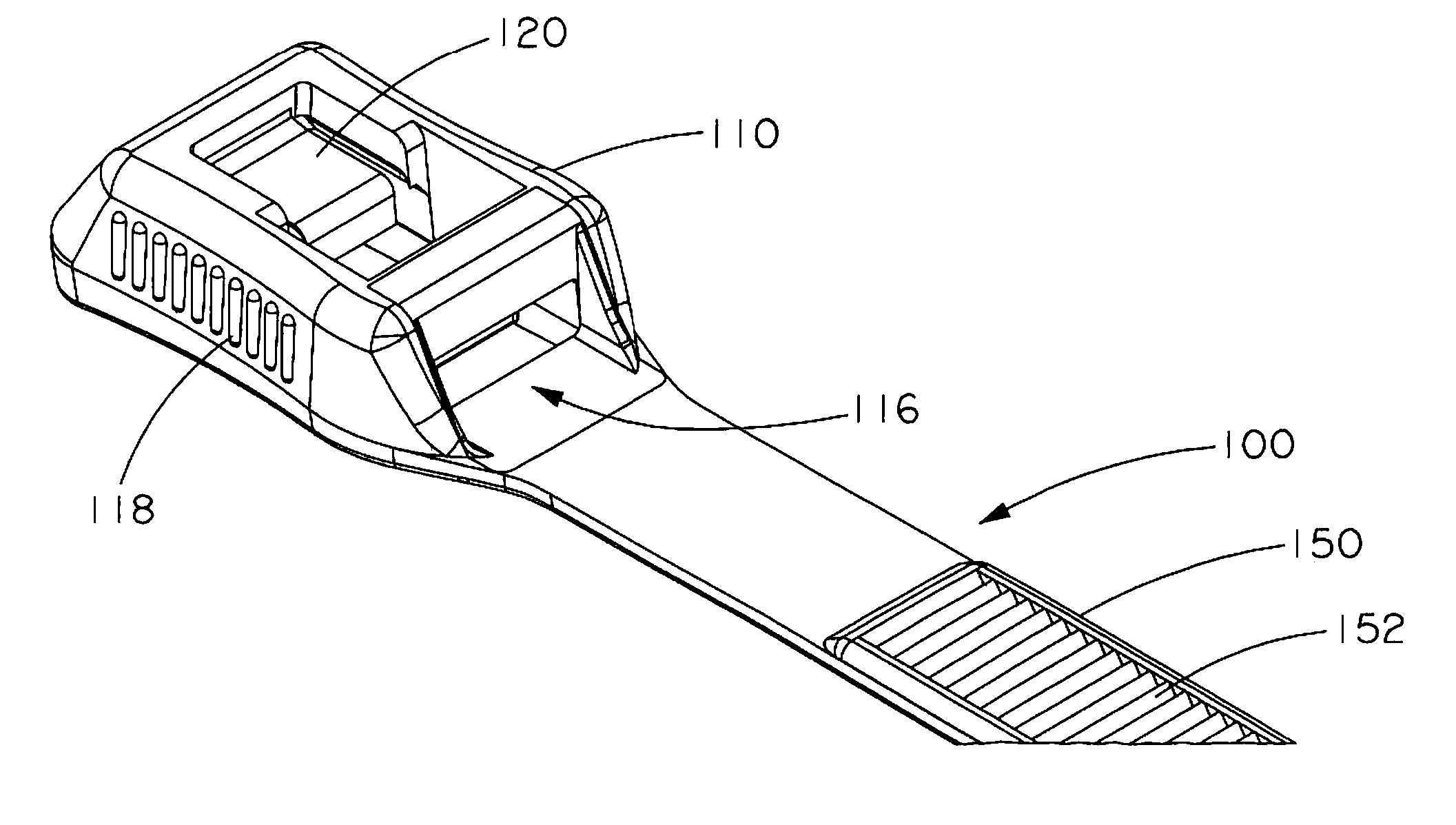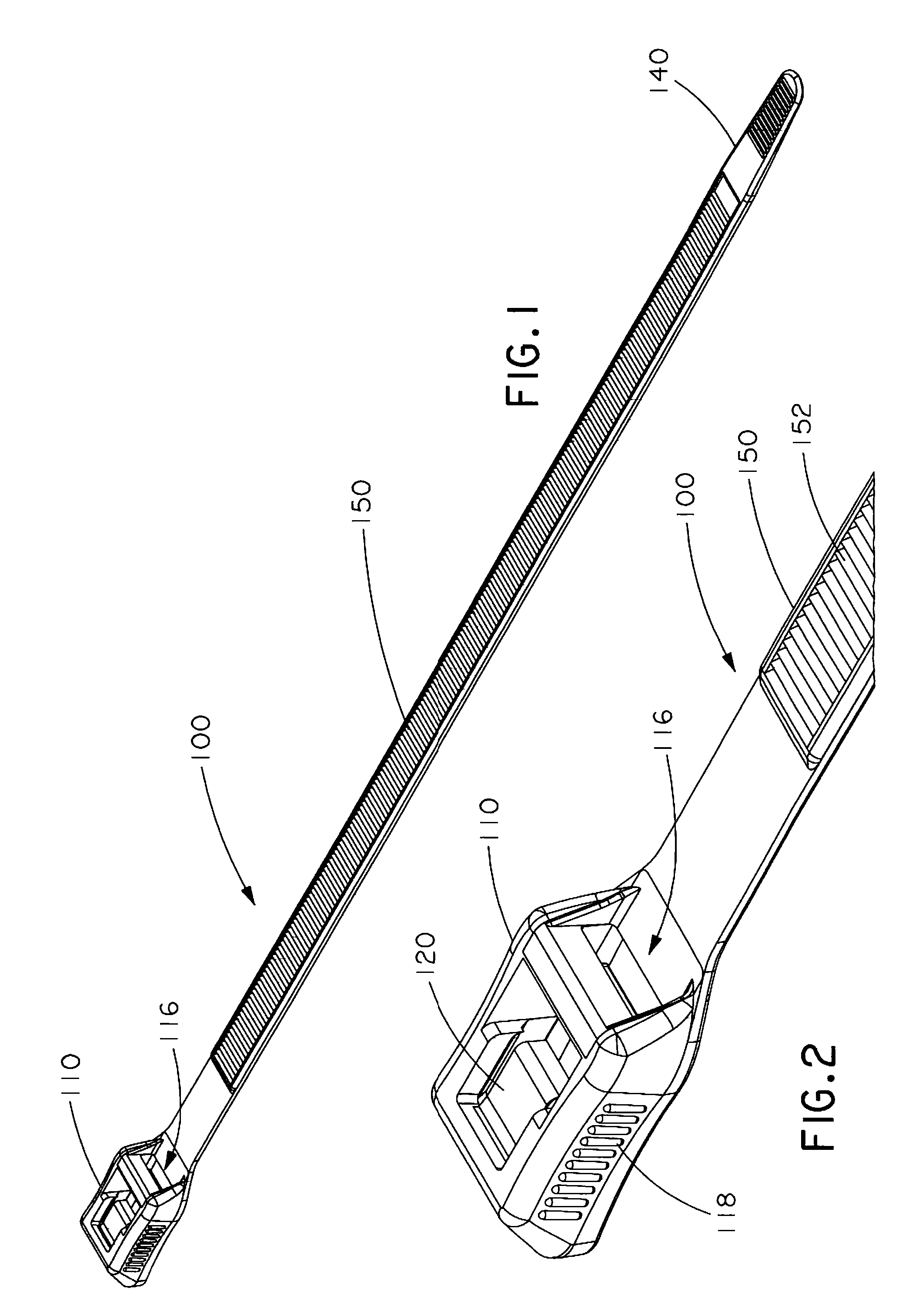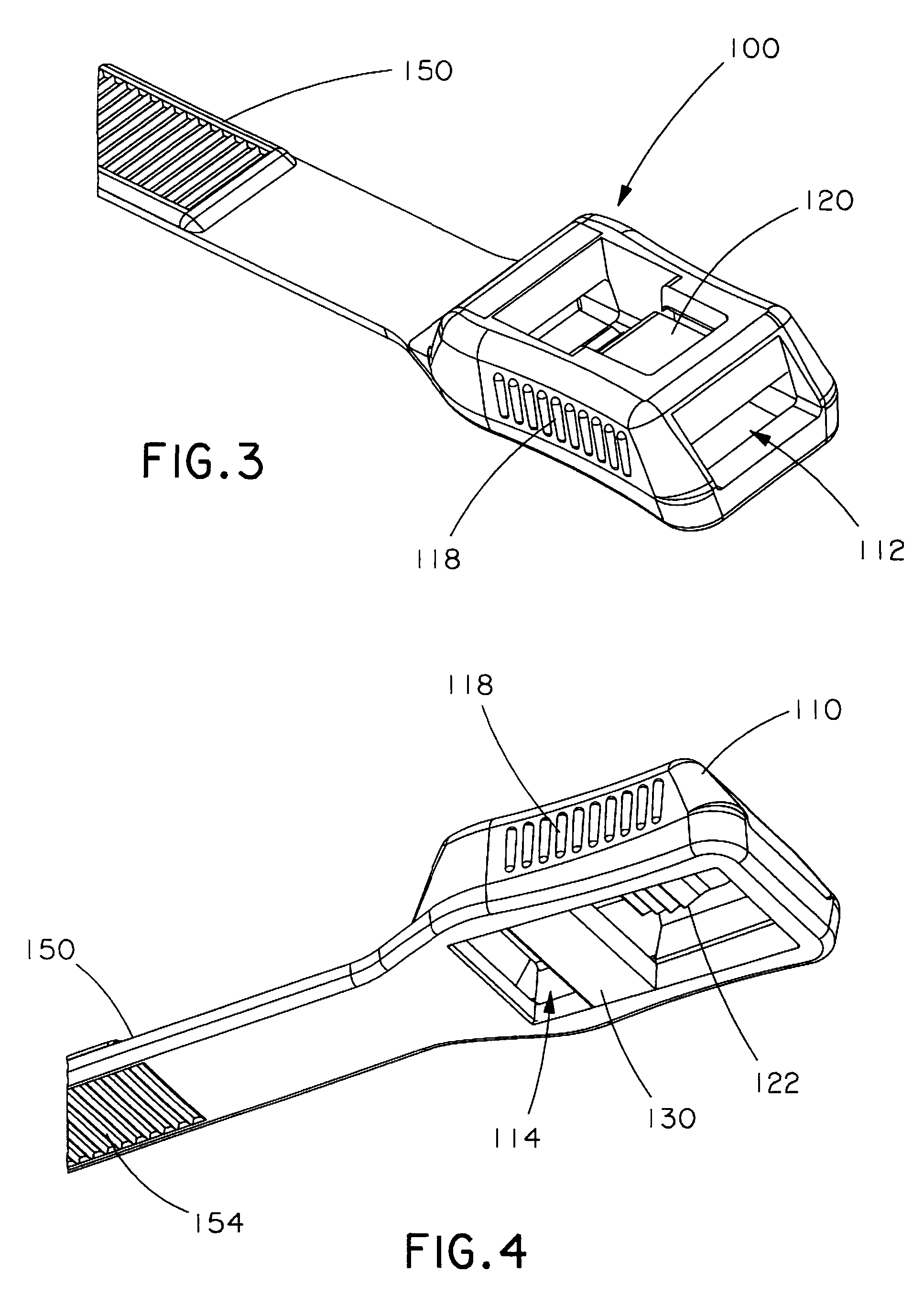In-Line Cable Tie with Fixed and Hinged Locking Mechanisms
a technology of fixed and hinged locking mechanisms and cable tie clips, which is applied in the direction of hose connections, machines/engines, transportation and packaging, etc., can solve the problems of high insertion force, high design tensile strength, and high cost of thread insertion force, and achieve substantial flexibility and increase the head length
- Summary
- Abstract
- Description
- Claims
- Application Information
AI Technical Summary
Benefits of technology
Problems solved by technology
Method used
Image
Examples
Embodiment Construction
[0028]FIGS. 1-10 show various views of an exemplary cable tie 100 according to the invention. Cable tie 100 includes a cable tie head 110 on one end, a cable strap tail 140 on an opposite end, and an elongated planar strap 150 therebetween. Strap 150 has a thickness T1 (FIG. 8) and two major surfaces. A first major surface forms a top side of the strap and has a plurality of first teeth 152 extending along a substantial portion of the surface (FIG. 5). A second major surface forms a bottom side of the strap and has a plurality of second teeth 154 extending along a substantial portion of the surface (FIG. 6). Cable tie 100 is made of a suitable plastic material, such as nylon. A preferred material is Nylon 6.6.
[0029] As best illustrated in FIG. 8, cable tie head 110 includes a strap ingress 112, a strap egress 116 and an internal passageway 114 extending therebetween sized and shaped to receive tail 140 therethrough. The internal passageway 114 is defined by top, bottom and side per...
PUM
 Login to View More
Login to View More Abstract
Description
Claims
Application Information
 Login to View More
Login to View More - R&D
- Intellectual Property
- Life Sciences
- Materials
- Tech Scout
- Unparalleled Data Quality
- Higher Quality Content
- 60% Fewer Hallucinations
Browse by: Latest US Patents, China's latest patents, Technical Efficacy Thesaurus, Application Domain, Technology Topic, Popular Technical Reports.
© 2025 PatSnap. All rights reserved.Legal|Privacy policy|Modern Slavery Act Transparency Statement|Sitemap|About US| Contact US: help@patsnap.com



